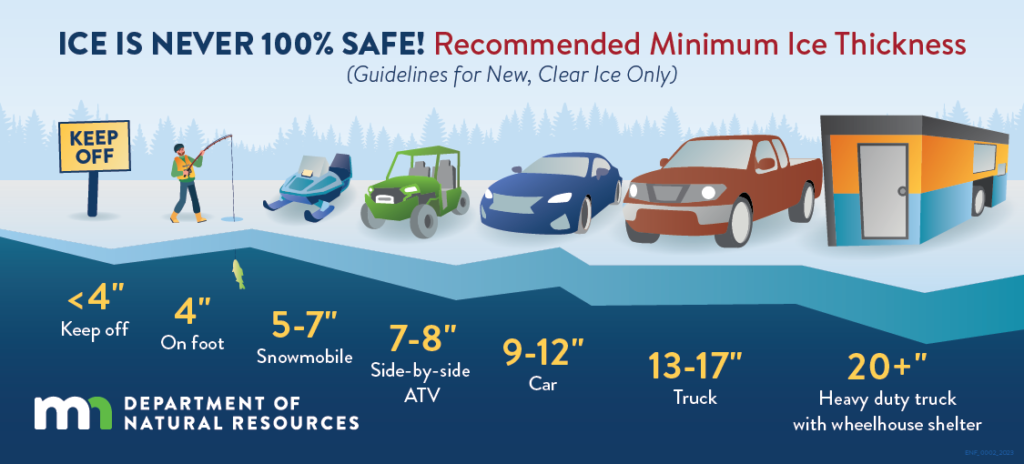MN DNR
The DNR does not measure ice thickness on Minnesota lakes. Your safety is your responsibility. Learn about the different ways to check ice thickness before heading out.
Temperature, snow cover, currents, springs and rough fish all affect the relative safety of ice. Ice is seldom the same thickness over a single body of water; it can be two feet thick in one place and one inch thick a few yards away.
Ice thickness guidelines for new, clear ice only.
UNDER 4” Stay off
4” Ice fishing or other activities on foot
5” – 7” Snowmobile or small ATV
7” – 8” Side-by-side ATV
9” – 10” Small car or SUV
11” -12” Medium SUV or small truck
13” Medium truck
16” -17” Heavy-duty truck
20”+ Heavy-duty truck with wheelhouse shelter
Our recommendations are based on average equipment weight and assume solid, clear ice. You are responsible for knowing the weight of your vehicle, equipment, and bodies.
Many factors other than thickness affect ice strength, including air temperature, wind, snow, streams, narrow areas or bottlenecks, sun, shade, fish communities, plant decay, and more. When a layer of snow melts and refreezes on top of lake ice, it creates white ice, only about half as strong as new, clear ice. Double the above thickness guidelines when traveling on white ice.


